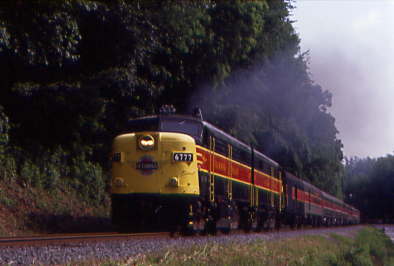
Chris Parker and I awoke the next morning and went to have another continental breakfast at the motel. At 6:15 AM, we walked across the street to the Holiday Inn and boarded the second bus to take us to our first excursion of the day. However, before we departed, our bus host told everyone that a washout south of Independence meant our trip would start at Brecksville, which was 5.9 miles south of the Rockside station. I would have to come back to ride that mileage sometime in the future. Anyway, it would still be a great trip today as I have always wanted to ride this railroad.
The buses departed at 6:30 AM going north on Interstate 77 through Canton and Akron to the exit in Brecksville then east into the Cuyahoga Valley National Park to the Brecksville depot. About a minute after I climbed off the bus, the train arrived from the north.
Today's Excursion InformationThe Cuyahoga Valley Scenic Railway currently operates 58 miles of trackage in northeastern Ohio, connecting the cities of Cleveland, Akron and Canton. Its history goes back to the days when Ohio was the "western frontier" of the United States, and the valley had importance as an area of agriculture, manufacuring and tourism.
The Ohio and Erie canal, which roughly parallels the CVSR from Akron to Cleveland, opened in 1827 as a link to the outside world for the valley's products. As was often the case for canals, the Valley Railroad began operating in 1880 in direct competition to the canal. It was reorganized as the Cleveland, Terminal and Valley Railway and eventually absorbed by the Baltimore and Ohio Railroad.
In September 1987, the National Park Service purchased the northern half of the railroad, to continue and expand service in the fledgling Cuyahoga Valley National Park. The line was most notable in the 1970's and 1980's as the home of ex-Grand Trunk Western steam locomotive 4070, which today is preserved in Cleveland. Operations expanded a few years ago to include much of the Valley's original route to Canton.
Today's excursion for the NRHS will be run with vintage, ex. Canadian National FPA4 locomotives, built by Alco, and an all stainless streamlined consist, including the railroad's premier observation car, the St. Lucie Sound. It will be the first excursion to run the entire route of the Cuyahoga Valley Scenic Railroad.

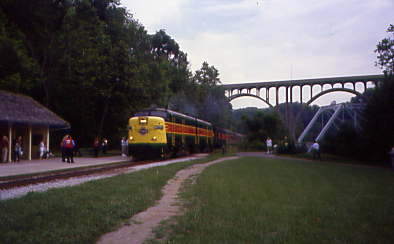
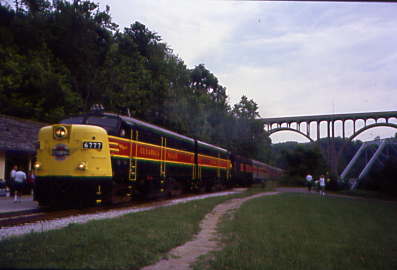
Our train arriving at Brecksville.
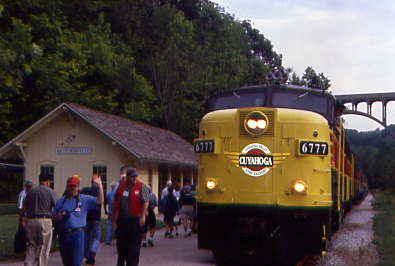
The train and the replica station.
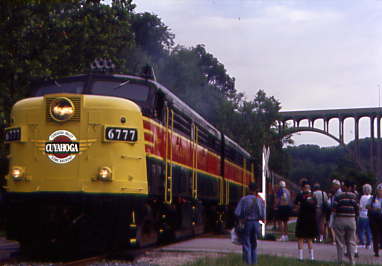
In the background is the Brecksville-Northfield High Level Bridge, a five-span open-spandrel arch bridge, which carries Ohio Route 82 over the Cuyahoga River in Cuyahoga and Summit Counties. Designed by county engineer A.M. Felgate, the bridge was built in 1930-31 by the Highway Construction Company and was rehabilitated in 1989.
The train then pulled down about ten car lengths.
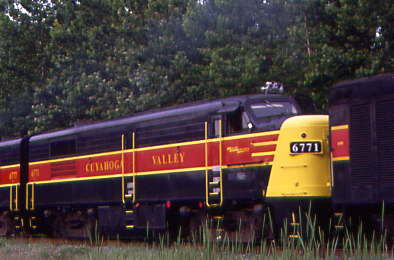
Cuyahoga Valley Scenic Railroad FPA4 6771, ex. Cuyahoga Valley Scenic Railroad 15 2003, exx. VIA 6771 1990, nee Canadian National 6771 1978, built by Montreal Locomotive Works in 1958. It was lettered Western Maryland 305 from 1990 to 1983 operating out of Cumberland, Maryland and was repainted in Delaware and Hudson livery in 1993.

Cuyahoga Valley Scenic Railroad FPA4 6777, ex. Cuyahoga Valley Scenic Railroad 14 2003, exx. VIA 6777 1992, nee Canadian National 6777 1978 built by Montreal Locmootive Works in 1959.
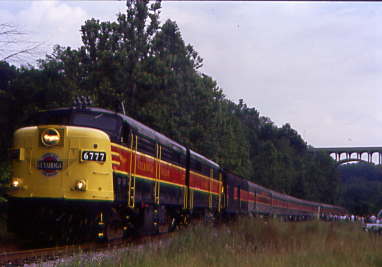
I walked through the weeds for this photograph then returned to the station as the train reversed into position and while everyone else boarded, I walked the train to obtain the consist. Our train consisted of FPA4s 6777 and 6771, power car 688, former US Army kitchen car 89670, coaches 727 "Invacare", former Central of Georgia coach 165 "Key Bank" built as Pennsylvania Railroad sleeper "Salem Inn", former Pennsylvania Railroad 167 "Simon Perkins" (formerly "Princeton Inn"), 168 "Clarence Reinberger" (formerly Pennsylvania Railroad "Ashtabula Inn"), former Southern Pacific bar-lounge, now café car 8700 and First Class cars 163 "Anne Farnham" (formerly Pennsylvania "Beaver Falls Inn"), 169 "Spirit of Summit (formerly Pennsylvania Railroad "Culver Inn") and former Florida East Coast 1 round-end observation car "St. Lucie Sound".
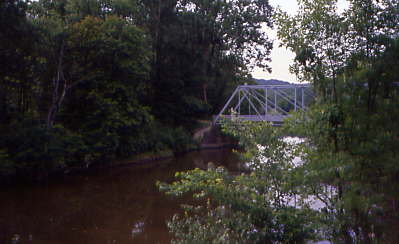
The Cuyahoga River.
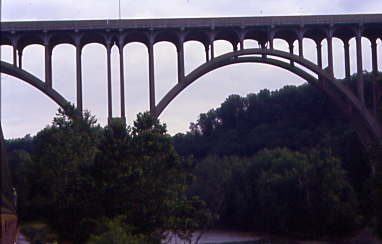
The high bridge.
The ExcursionOur train departed Brecksville at 9:00 AM bound for Canton, running south along the Cuyahoga River.
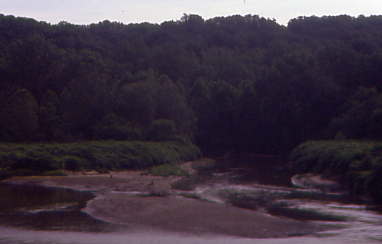
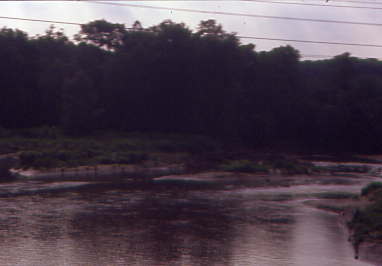
The Cuyahoga River, whose watershed begins its 100-mile journey in Hambden, flowing southward to the confluence of the East Branch Cuyahoga River and West Branch Cuyahoga River in Burton, where the Cuyahoga River officially begins. It continues on its 84.9-mile journey flowing southward to Akron and Cuyahoga Falls, where it turns sharply north and flows through the Cuyahoga Valley National Park in northern Summit County and southern Cuyahoga County. It then flows through Independence, Valley View, Cuyahoga Heights, Newburgh Heights and Cleveland to its northern terminus, emptying into Lake Erie. The Cuyahoga River and its tributaries drain 813 square miles of land in portions of six counties.
The river is a relatively recent geologic formation, formed by the advance and retreat of ice sheets during the last ice age. The final glacial retreat, which occurred 10,000–12,000 years ago, caused changes in the drainage pattern near Akron. This change in pattern caused the originally south-flowing Cuyahoga to flow to the north. As its newly reversed currents flowed toward Lake Erie, the river carved its way around glacial debris left by the receding ice sheet, resulting in the river's winding U-shape. These meanderings stretched the length of the river (which was only 30 miles when travelled directly) into a 100-mile trek from its headwaters to its mouth. The depth of the river ranges from three to six feet.
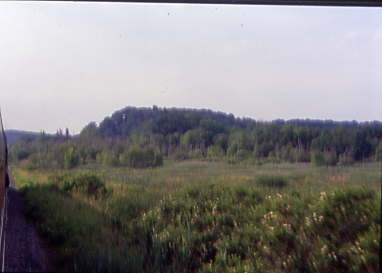
We passed through the prairie in this part of the National Park.
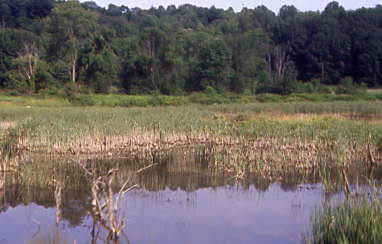
Passing a very beautiful lake on the start of another hot and humid Ohio day.
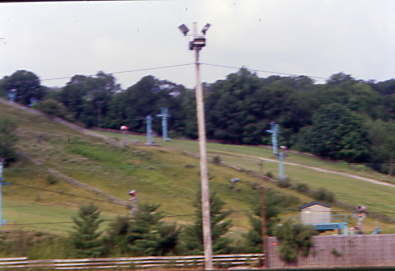
Going through the Boston Mills/Brandywine Ski Area.

A slight curve to the left.
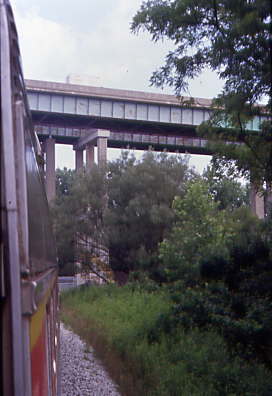
Going underneath the Interstate 80 Bridges.
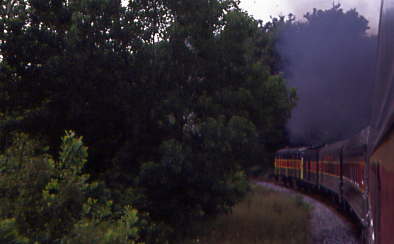
Along the way, the locomotives smoked as good Montreal Locomotive Works-built units do.

Another prairie scene.
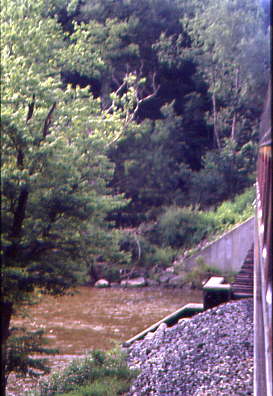
Crossing the Cuyahoga River as we neared the Peninsula depot.
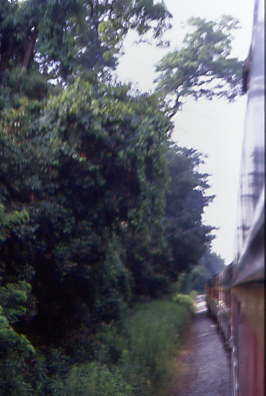
Smoking it up as we proceeded south.
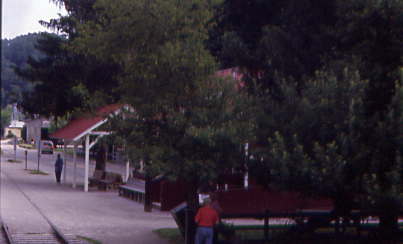
The Cleveland Terminal and Valley station in Peninsula, which was built in 1967 after the original 1880 one was destroyed in a fire, and was re-located from Boston Mills. The Cleveland Terminal and Valley, or the Valley Railway, was a shortline railroad which operated between the city of Cleveland and small town of Zoarville, Ohio. The railroad was founded in 1871, but the first segment of track did not open until 1880 and the line was not completed until 1884. The Baltimore and Ohio Railroad obtained a controlling interest in the Valley Railway in 1890. The railroad went bankrupt in 1895, at which time it was reorganized as The Cleveland Terminal and Valley Railroad Company. The B&O took over operation of the CT&V in 1909, and the company was merged with the B&O in 1915.
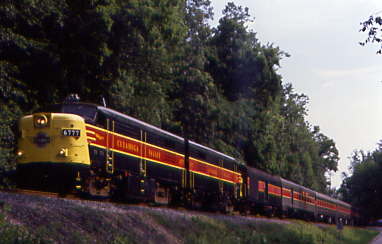
At MP 51, the train dropped us off for the first photo runby.

The photo line was at the edge of the road, unless like me, you were at the south end and could get out on the road, which was being protected by a Cuyahoga Valley Scenic Railroad truck. This would be a double photo runby.
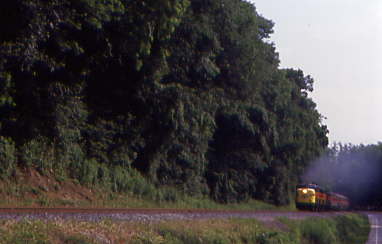
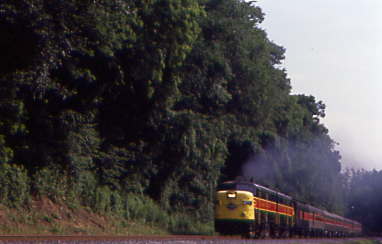
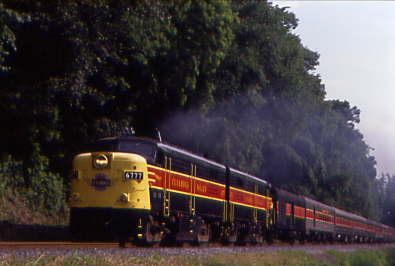
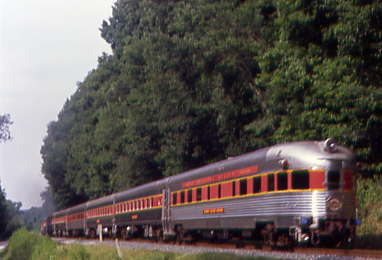

Photo runby one.
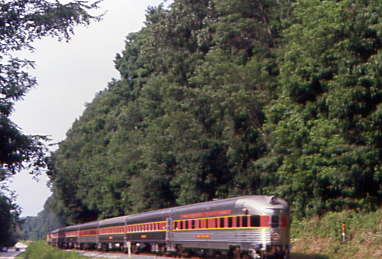

The reverse move to put the train into position for photo runby two.
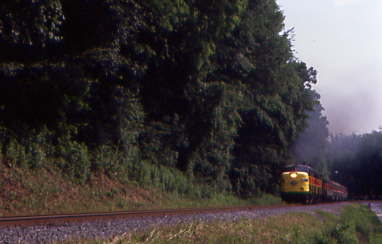
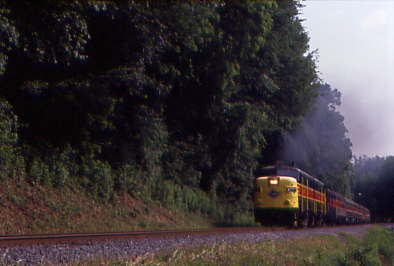

Photo runby two.

Cuyahoga Valley Scenic Railroad round-end observation car 1 "St. Lucie Sound, nee Florida East Coast built by Budd Company in 1946. It was sold to the Canadian Tower Limited in 1986 where it was refurbished. CVSR acquired the car from the Haslinger family in 1995.
We reboarded at the grade crossing before continuing south through the Cuyahoga Valley National Park.
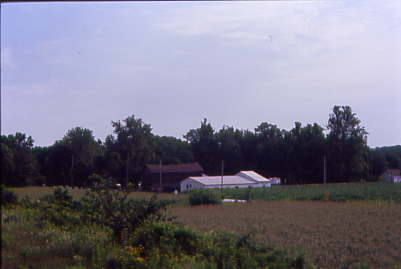
A nice rural scene.
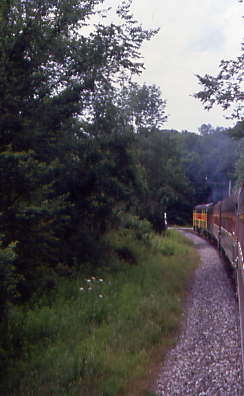
We continued south through the park.
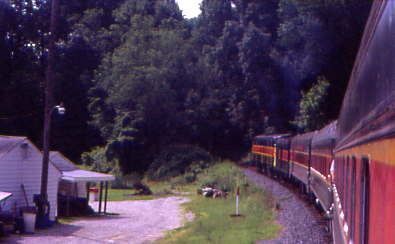
Passing a small light industrial area.

Approaching Botzum, Ohio.
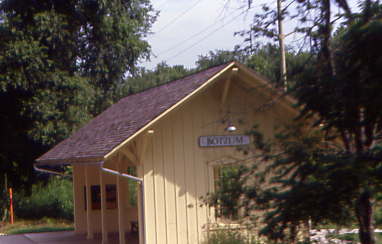
The Botzum station, whose name originates from a former nearby hamlet named after the most prosperous family in the area. It was one of three small crossroads communities in what is now the southern section of Cuyahoga Valley National Park.
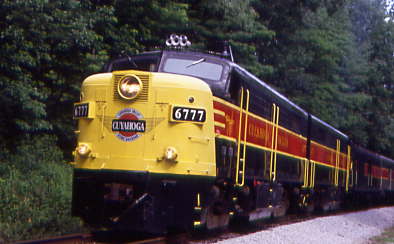
At Milepost 43, we stopped for another photo runby. The photo line was along the Big Ben Trail and locals walking or bicycling through the area must have wondered what all these people were doing.

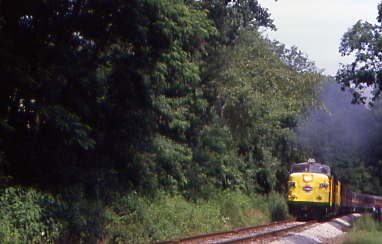
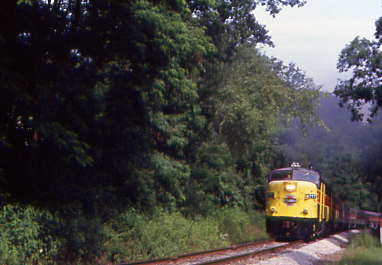
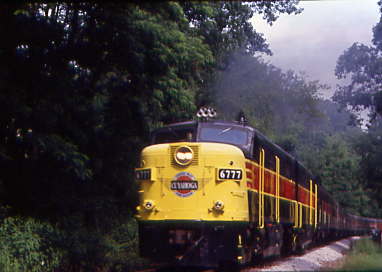
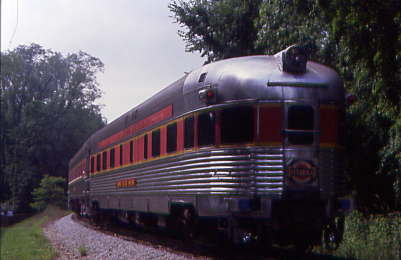
Photo runby three.
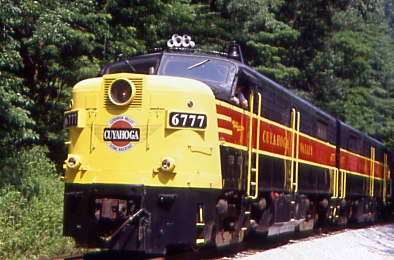
Cuyahoga Valley Scenic Railroad FPA4 6777 as it reversed.
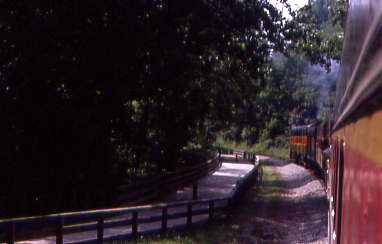
We reboarded and continued south on what was once the route of Baltimore and Ohio's "Cleveland Night Express" between Cleveland and Washington/Baltimore.
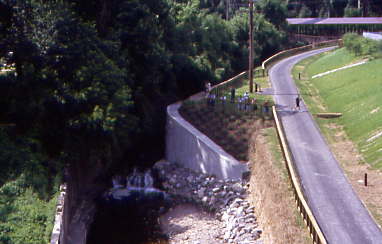
The Cascade Locks are amongst the most impressive canal engineering achievements in the country. This "staircase" of locks was designed to carry the canal over the north- south continental divide which, at its summit, is 340 feet above the canal outlet at Cleveland. Nearly destroyed following the demise of the canal, the area is being rescued by the Cascade Locks Park Association and other interested groups.
Here you may see the lock remnants of the canal and its parallel millrace that supplied the area with immense waterpower. These two features resulted in the genesis of the City of Akron-the locks leading to commercial development and the millrace to industrial development. At the base of the Cascade is the beautifully restored Mustill's Store, a canal landmark that now houses canal exhibits and memorabilia. Just south of North Street, at the base of the millrace was Schumacher's Cascade Mills, later to be known as Quaker Oats.
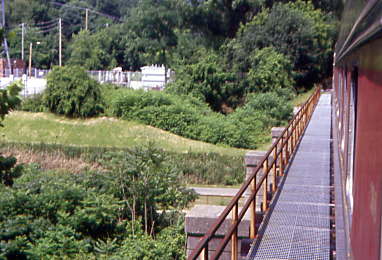
Crossing the Cascades Locks.

We arrived at the Akron North Side station, which was the lunch stop and the caterer brought the lunches here and since I listened well, I was first in line.
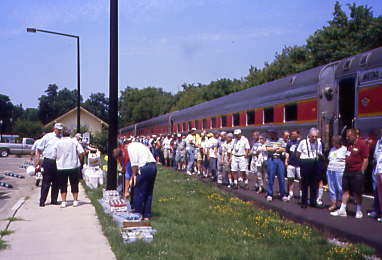
Once you obtained your lunch, you returned to the coolness of the train to eat it. We departed at 12:30 PM.

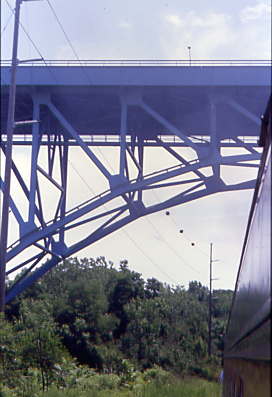
The Interstate 79 bridges.
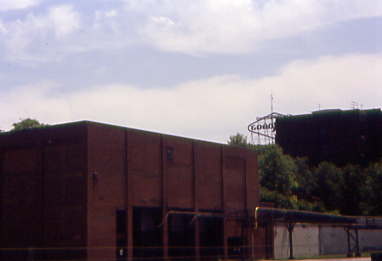
Passing the Goodyear Plant sign.
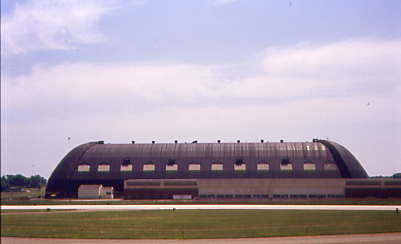
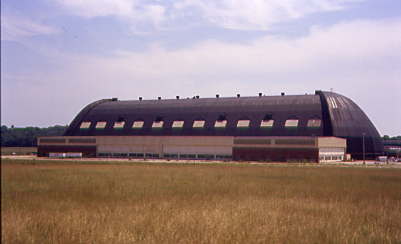
In 1929, Goodyear Zeppelin Corporation, later Goodyear Aerospace, sought a structure in which "lighter-than-air" ships (later known as airships, dirigibles and blimps) could be constructed. The company commissioned Karl Arnstein of Akron, Ohio, whose design was inspired by the blueprints of the first aerodynamic-shaped airship hangar, built in 1913 in Dresden, Germany. Construction took place from April 20 to November 25, 1929, at a cost of $2.2 million.
The first two airships to be constructed and launched at the airdock were USS Akron, in 1931, and its sister ship, USS Macon. When World War II broke out, enclosed production areas were desperately needed and the airdock was used for building airships. The last airship built in the airdock was the United States Navy's ZPG-3W in 1960. The building later housed the photographic division of the Goodyear Aerospace Corporation. In 1980, the Goodyear Airdock was designated a Historic Civil Engineering Landmark by the American Society of Civil Engineers. In 1997, Lockheed Martin acquired the Airdock.
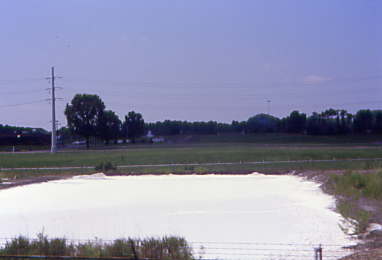
As the train approached Canton, the Pro Football Hall of Fame could be seen in the distance.

Before we arrived at Canton, we stopped at McKinley Park for the last photo runby.
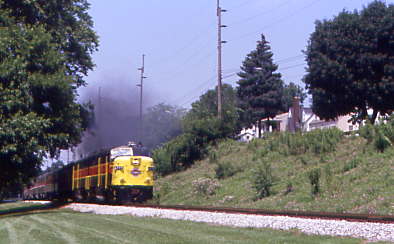
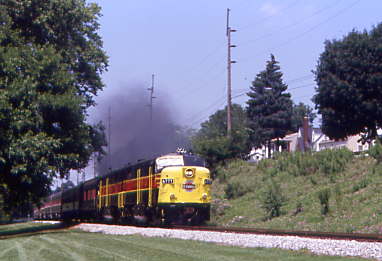

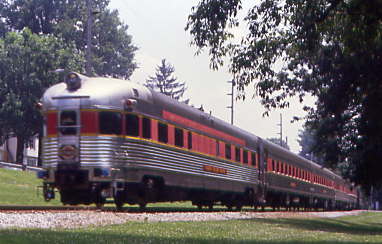
Here in the shade of the park's trees, photo runby four.
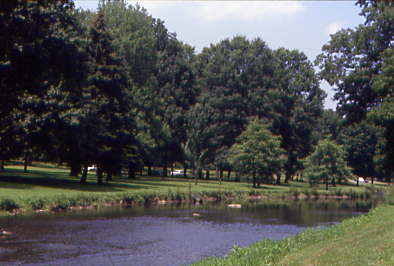
The stream flowing through McKinley Park.
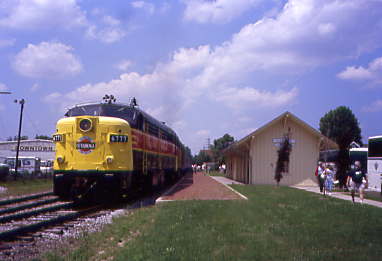

We all reboarded for the short jounrye to the Canton Lincoln Highway station, where this fantastic excursion on the Cuyahoga Valley Scenic Railroad ended. Passengers boarded the buses for the next destination, with most of them going back to the Holiday Inn in New Philadelphia. One bus went west to the Orrville Depot Museum and the last two buses proceeded east to the Minerva Steam Railroad Museum, with Chris Parker and I being on one of those.
| RETURN TO THE MAIN PAGE |